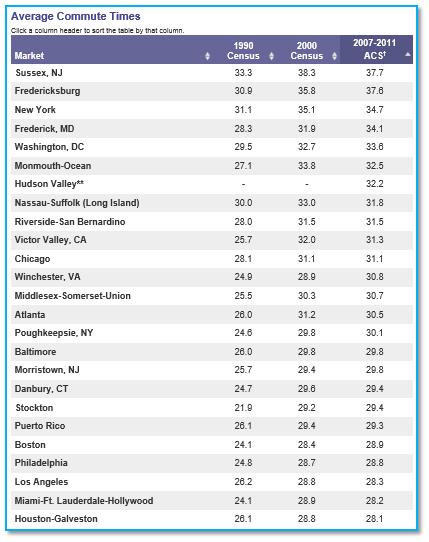Some bad news this year for many consumers is potentially great news for radio. A recovering economy translates to more gridlock, more traffic jams, and longer commute times – perfect for a medium where the majority of consumption takes place while driving.
The INRIX Gridlock Index (IGI) shows traffic jam increases year to year, and also for the first two months of 2013 – an indication that there are more workers trying to get to their jobs – and a greater opportunity for radio to grow its morning (and afternoon drive) audiences.
INRIX’s CEO, Brian Mistele, noted that “stalled traffic is actually a side effect of a moving economy as people go to work, spend money and businesses respond to demand.”
For radio broadcasters, it’s a gift. Traffic is especially gnarly in places like Salt Lake City (+111%), Greensboro, NC (+192%), Knoxville (+100), and Richmond (+86%). So if you’re in radio, is there a prettier picture than this?
Yes, gridlock is good. And Arbitron recently connected the dots for radio (and for radio sellers) by publishing updated commute times from the U.S. Census Bureau’s 2007–2011 American Community Surveys.
So now you can sit down with your morning and afternoon drive jocks, as well as your salespeople, and rethink your programming and sales strategies to best take advantage of this improving economic environment and how it is making traffic worse and (potentially) radio listening better.
The Arbitron/U.S. Census data even tells you the mode of transportation that consumers use, as well as the average time they leave for work. So in Honolulu, 40% of workers leave their homes before 7am. And in Youngstown, a whopping 87% drive to work by themselves, while in New York City, nearly a third take public transportation. (It would seem to be pretty smart to have dedicated mobile apps for NYC-based stations, but amazingly, very few actually do.)
If you’re spending a lot of time counting meters or tracking diary comments, perhaps this information about what American workers are doing and when they’re doing it might better help you connect the dots.
And if you still believe that radio has the leading edge over all these commuting consumers, you might want to rethink that assumption. As more and more people use their drive time to talk on cell phones, and as “digital dashboards” become more commonplace, radio will be competing even harder to win over these on-to-go consumers. More on this in the upcoming Techsurvey9 which will debut at the Worldwide Radio Summit in L.A. early next month. We have some amazing data about radio listeners, their dashboards, and how in-car listening is changing.
And that’s a look at traffic.
- A 2020 Lesson?It Could All Be Gone In A Flash - April 24, 2025
- How AI Can Give Radio Personalities More…PERSONALITY - April 23, 2025
- Can Radio Afford To Miss The Short Videos Boat? - April 22, 2025






Actually, I get my traffic reports via Twitter. They pop up in my Local Media list where I follow a couple of different sources. That way, I can get the report I want when I want it. It’s especially useful in a market this size after 8:30an or before 4pm when none of the local stations are airing reports.